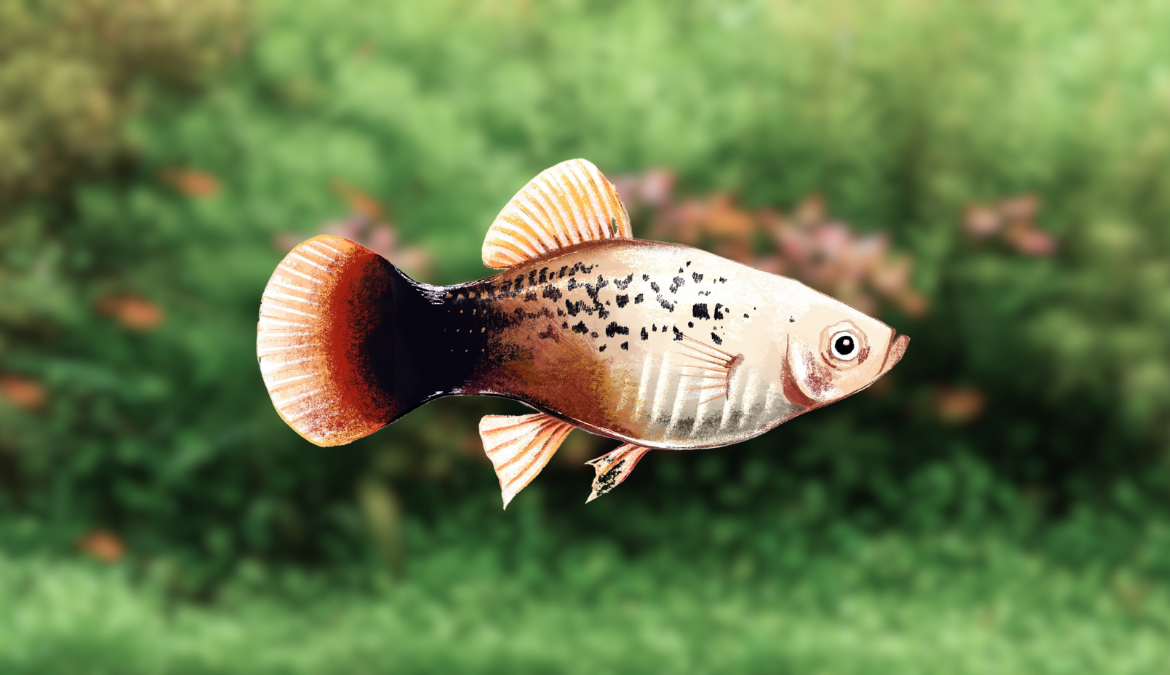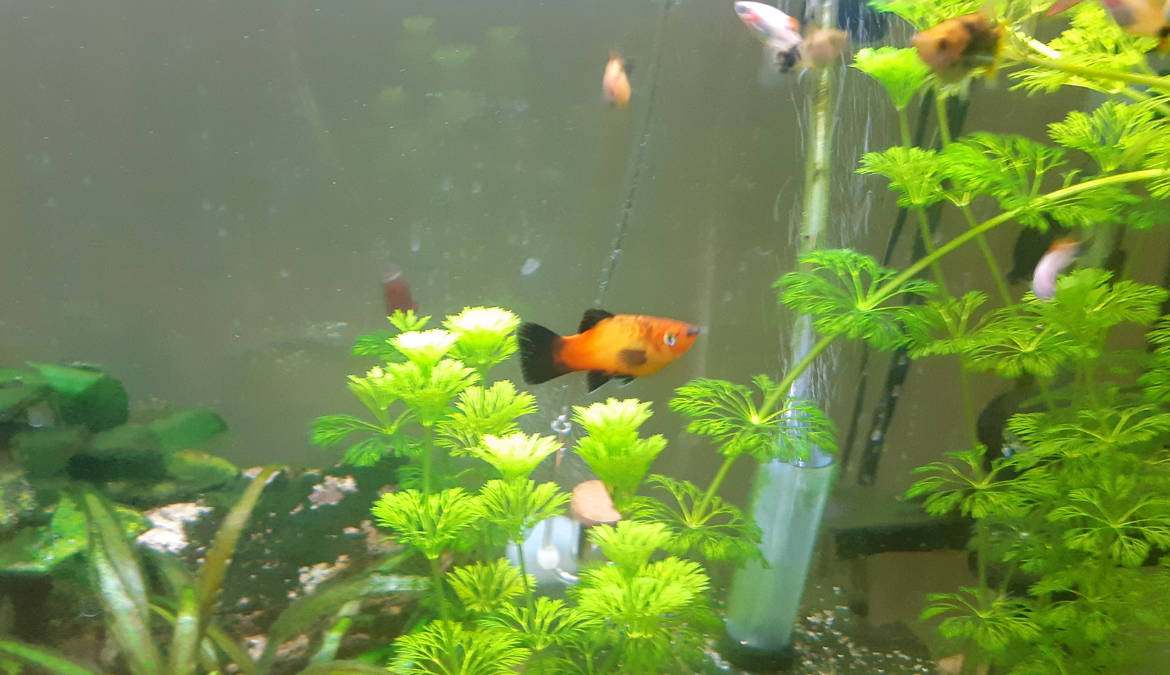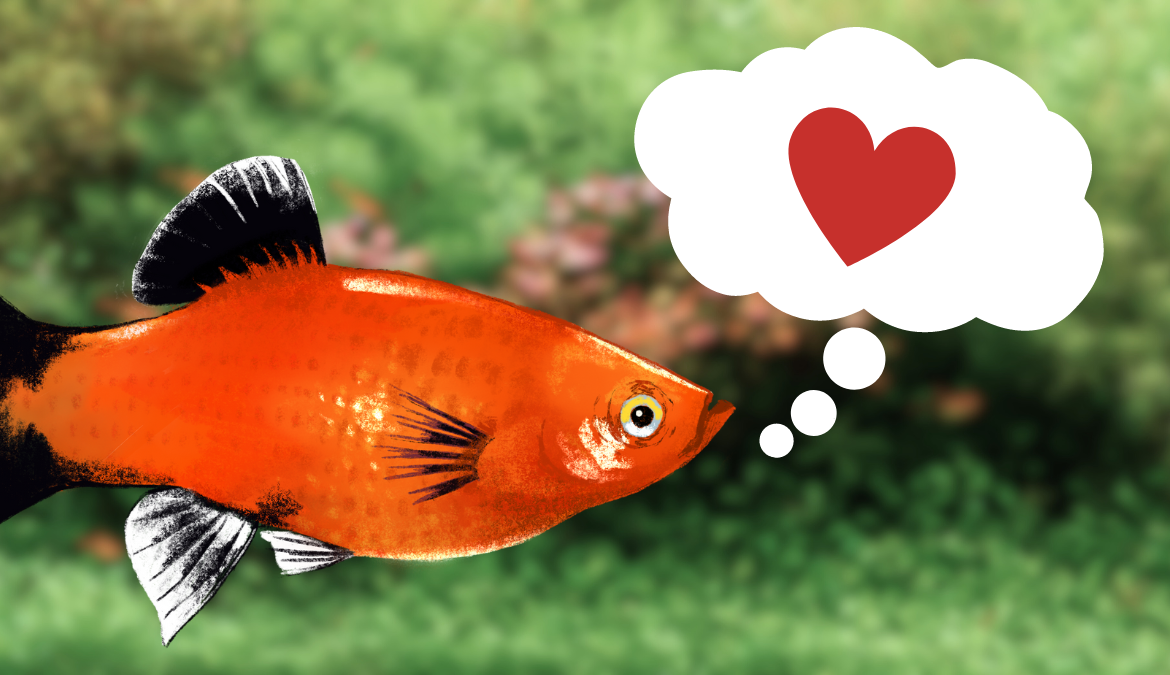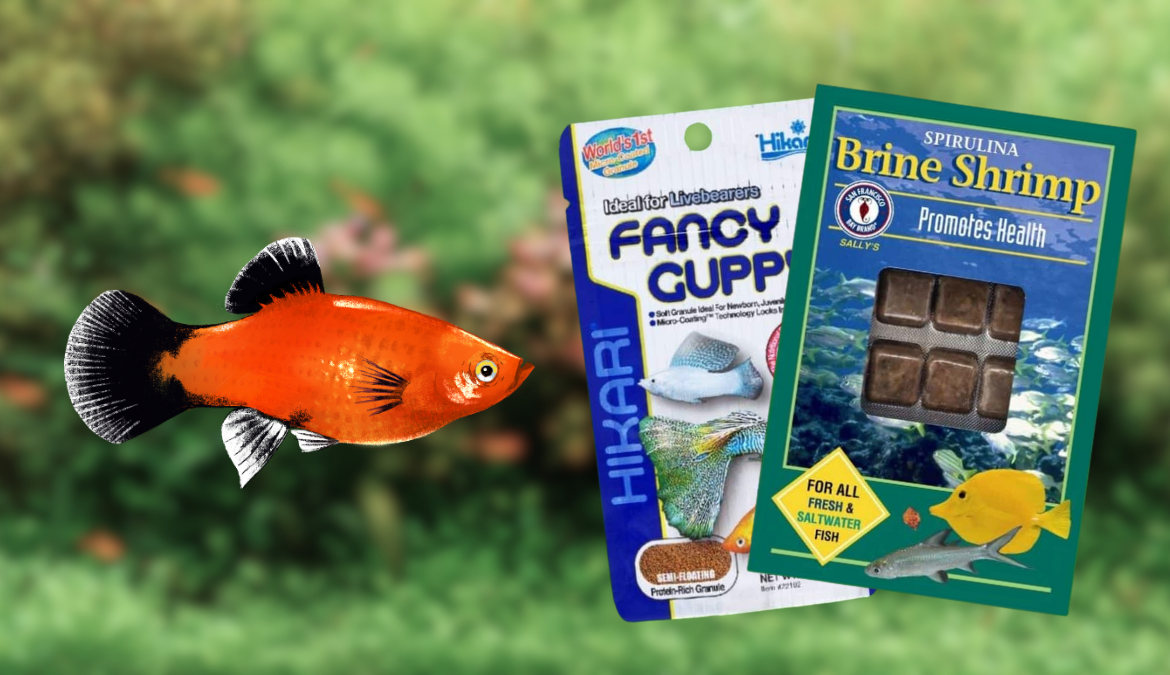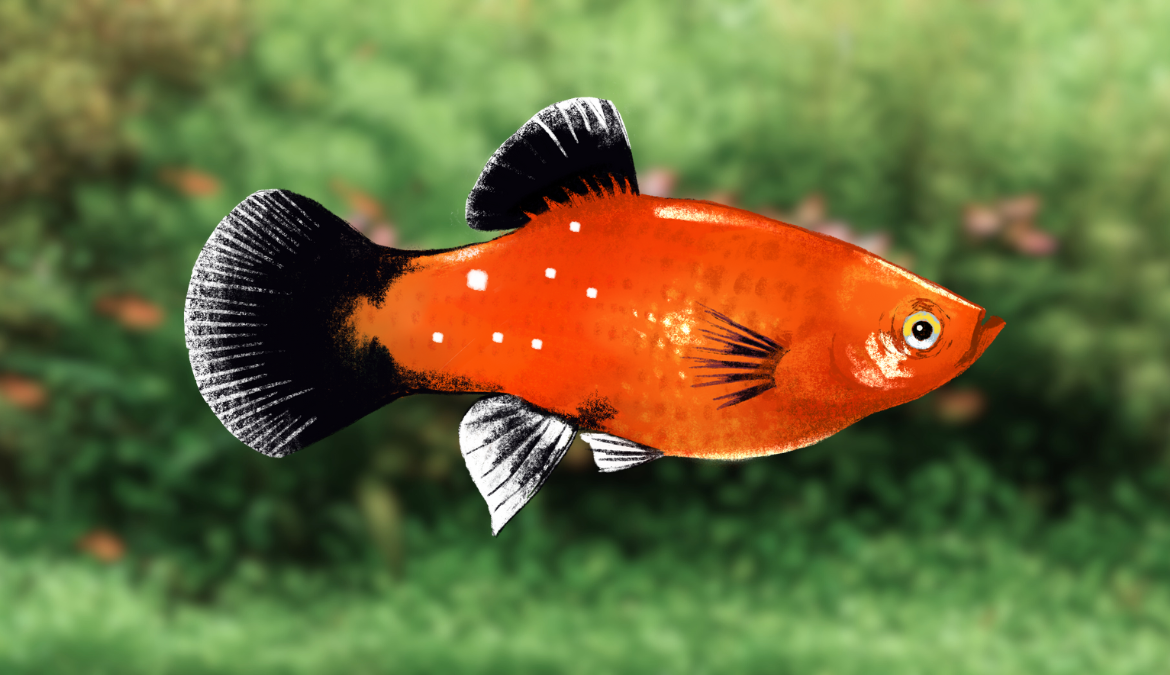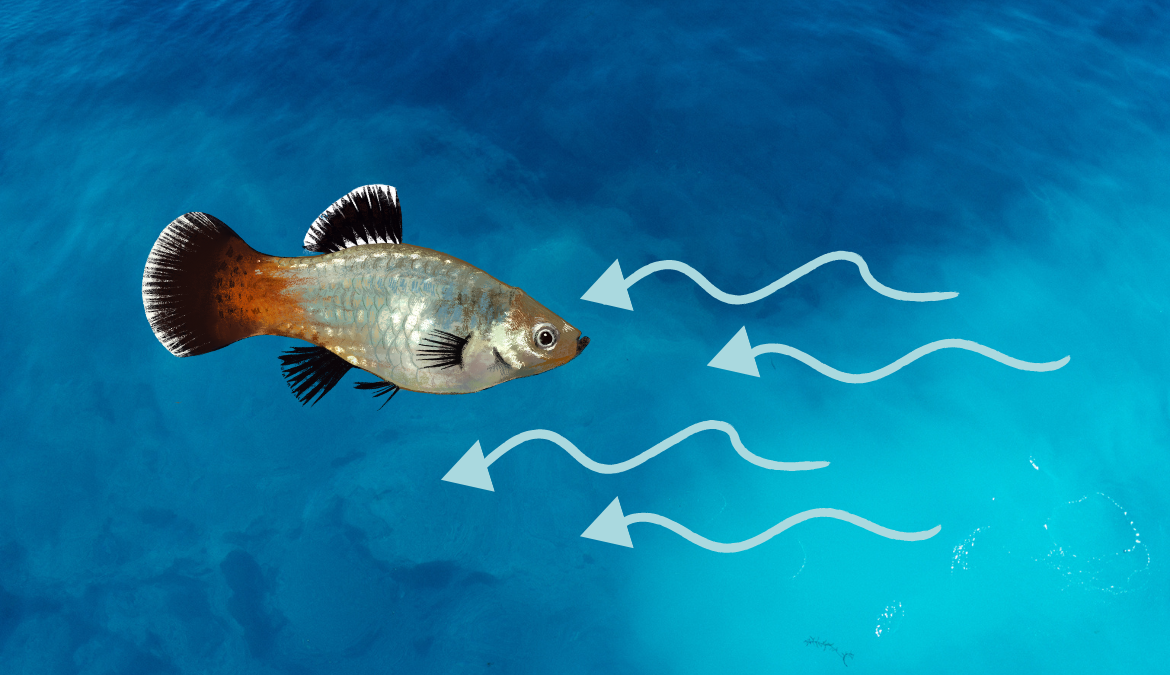Most platy caretakers understand that a varied and balanced diet is important for keeping healthy and thriving platy fish. But many fishkeepers don’t realize the nutritional and enrichment benefits from incorporating live foods into their diets as well.
Daphnia, brine shrimp, bloodworms, and microworms are nutritious live food choices that add protein to a platy’s diet. This is important for muscle and tissue development, successful immune function, enrichment, more natural behaviors, among other benefits.
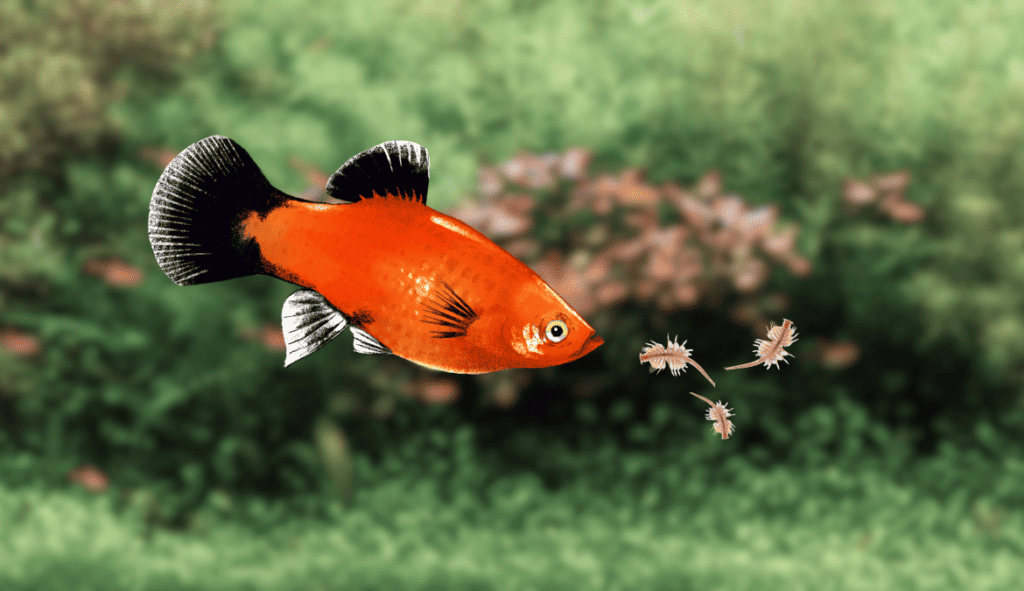
Here’s everything you need to know about live feeding your platies:
Contents
The Importance of a Varied Diet for Platy Fish
Platy fish are omnivorous, meaning they naturally consume a combination of plant and animal matter in the wild. Providing a varied diet that mimics their natural feeding habits is crucial for their health.
A diverse diet ensures they receive all the necessary nutrients, promotes healthy growth, and can even enhance their vibrant colors.
Live foods, in particular, can offer a range of benefits to platy fish, providing not only essential nutrients but also mental stimulation through the hunting and foraging process. By offering a variety of live foods in addition to regular platy fish foods, you can ensure your fish receive a balanced and nutritious diet.
What are Live Foods?
Live foods refer to living organisms such as small invertebrates, insects, or larvae that are fed to fish as a source of nutrition. They are an excellent source of protein, vitamins, and minerals, and closely resemble the natural diet of platy fish in the wild.
One of the primary benefits of live foods is that they trigger a fish’s natural hunting instincts, offering mental stimulation and physical exercise. This not only improves their overall health but can also help prevent issues such as aggression and boredom in the aquarium.
I’ve noticed a remarkable difference in behavior while my platies attempt to hunt their live prey. They seem to be a lot more attentive and curious as they make sharp movements and investigate all corners of their tank.
The Nutritional Benefits of Live Foods for Platy Fish
Live foods provide a wide range of nutritional benefits for platy fish, contributing to their overall health and well-being. For example, they are a rich source of protein, which has a few benefits:
- Growth and Repair: Fish use proteins to build and repair body tissues such as muscles, skin, scales, and organs. The need for protein is especially high during periods of rapid growth or recovery from illness or injury.
- Production of Enzymes and Hormones: Enzymes, which are proteins, are necessary for virtually every biological process in a fish’s body, including digestion and energy production. Hormones, many of which are also proteins or are produced with the aid of proteins, regulate growth, reproduction, metabolism, and many other functions.
- Immune Function: Proteins are needed for the formation of antibodies, which help fish fight off infections.
- Energy: Although fish usually use fats and carbohydrates as their primary sources of energy, they can use protein as well when necessary.
Additionally, live foods contain essential fatty acids, which support cell membrane integrity, promote a healthy immune system, and can enhance your fish’s vibrant colors.
If a platy’s diet is deficient in protein, it may experience slowed growth, weakened immunity, and other health problems. However, it’s also important not to overfeed protein, as this can lead to issues such as water quality degradation and kidney damage in fish.
Some live foods also provide essential vitamins and minerals that may not be present in sufficient quantities in commercially available fish foods. For instance, live foods are often high in vitamin A, which supports eye health, and vitamin D, which aids in calcium absorption and bone growth.
These nutrients, along with others found in live foods, help to support your platy fish’s overall health and well-being.
Types of Live Foods Suitable for Platy Fish
There are several types of live foods that are suitable for platy fish. When selecting live foods, it is essential to choose species that are small enough for your fish to consume and provide the appropriate nutritional benefits.
Daphnia
Daphnia, also known as water fleas, are small crustaceans that are an excellent choice for platy fish. They are rich in protein, omega-3 and fiber, which help with digestion, muscle growth, cardiovascular health and imflammation.
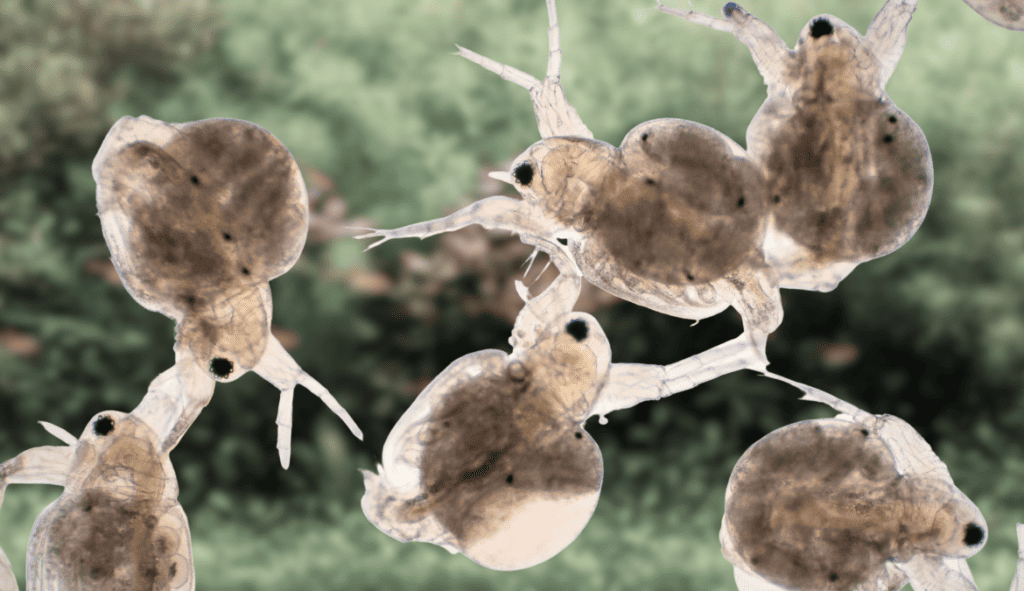
Daphnia are also easy to culture at home, providing a continuous and cost-effective source of live food for your aquarium. Additionally, their rapid movement in water can stimulate the hunting instinct of your platy fish, adding an enriching activity to their daily routine.
Brine Shrimp
Brine shrimp are another excellent choice of live food for platy fish. These tiny aquatic crustaceans are packed with protein and essential fatty acids, supporting overall health and vibrant colors in your fish.
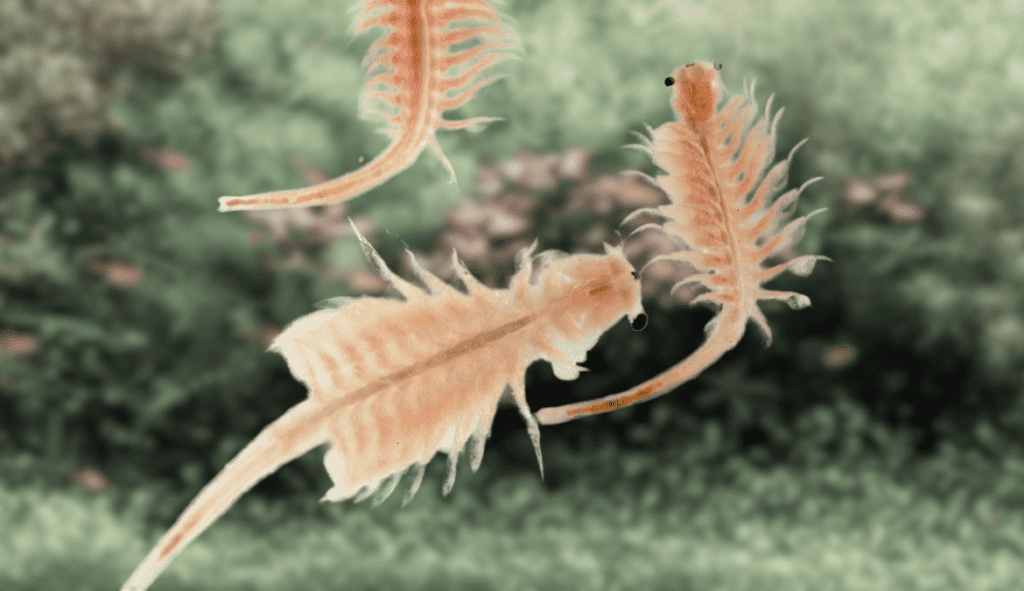
Like daphnia, they contain protein and omega-3. But they’re also a good source of carotenoids, which are pigments that are absorbed and deposited into a platy’s skin cells, enhancing color.
They are also straightforward to hatch at home from commercially available eggs. The newly hatched shrimp, known as nauplii, are small enough for platy fish to consume and provide a high energy food source.
Bloodworms
Bloodworms, which are the larvae of midge flies, are a highly nutritious live food option. They are notably high source of iron, which supports red blood cell production.
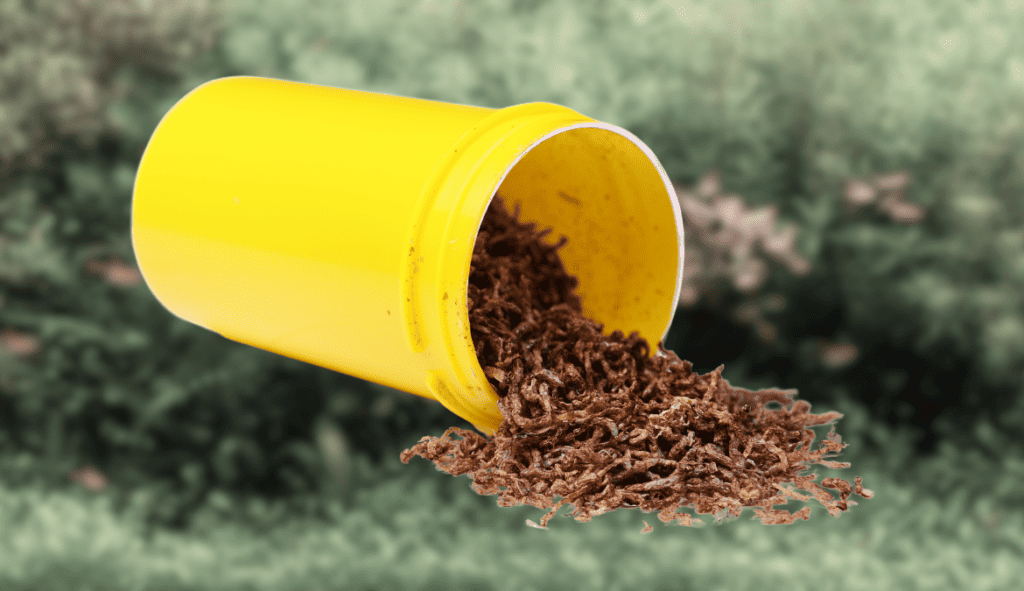
However, it’s important to remember that bloodworms should be fed sparingly as a treat rather than a staple diet due to their high fat content. Overfeeding can lead to obesity and related health problems in platy fish.
Microworms
Microworms are tiny nematodes that are particularly beneficial for feeding juvenile and small adult platy fish. They are packed with protein and easy for small fish to eat. Microworms can be easily cultured at home, providing a reliable and cost-effective source of live food.

Feeding Tips for Live Foods
While live foods offer a range of benefits for your platy fish, it’s important to feed them responsibly to avoid potential problems. Here are some tips for feeding live foods to your platy fish:
Quarantine New Live Foods
Before introducing live foods into your aquarium, it’s crucial to quarantine them first. This helps to ensure they are free from disease and parasites that could harm your fish.
Consider “gut loading” your live foods
Some aquarists also choose to “gut load” their live foods during this quarantine period, which involves feeding the live foods a nutritious diet to further enhance their nutritional value.
Here’s a simple gut loading guide:
- Start with Healthy Brine Shrimp: You’ll need to hatch your own brine shrimp or buy live ones from a reliable source. Make sure they’re active and healthy as sickly brine shrimp won’t provide the desired nutritional benefits.
- Prepare Nutrient-Rich Food: You can use a commercial invertebrate food or create your own. Some people use a mix of spirulina powder and yeast, while others blend various vegetables and supplements. Foods rich in carotenoids (like carrots or red bell peppers) can be used for color enhancement.
- Feed the Brine Shrimp: Add the food to the brine shrimp container. The brine shrimp will consume the food, filling their guts with these beneficial nutrients. The amount of food you add will depend on the number of shrimp and the size of the container, but you generally want just enough that the water becomes slightly cloudy.
- Wait: Allow the brine shrimp to feed for several hours (usually around 12-24 hours). This will give them plenty of time to eat the food and load their guts with nutrients.
- Harvest and Feed to Your Fish: Once the brine shrimp are gut-loaded, you can net them out and feed them to your fish.
Moderation is Key
While live foods can be a beneficial addition to your platy fish’s diet, they should not replace a balanced commercial diet.
Live foods should be offered as a supplement to a well-rounded diet, rather than as the sole source of nutrition. Overfeeding live foods can lead to obesity and other health problems in platy fish.
Monitor Your Fish
Always observe your fish during and after feeding live foods. This allows you to ensure all fish are getting a chance to eat and to watch for any signs of distress or illness.
If you notice any changes in your fish’s behavior or appearance after feeding live foods, it’s important to consult with a veterinarian or experienced aquarist.
Variety is Important
Just as humans thrive on a varied diet, so do your platy fish. Each type of live food offers different nutrients and benefits, so providing a mixture can help ensure your fish receive a balanced diet. A variety of foods can also keep your platy fish interested and stimulated, contributing to their overall well-being.
Feed According to Size
It’s important to feed live foods that are appropriate for the size of your platy fish. Larger fish can handle bigger prey like adult brine shrimp, while smaller fish and fry may need smaller foods like microworms or newly hatched brine shrimp
Ensuring the live food is an appropriate size can prevent choking hazards and ensure your fish are able to comfortably consume their food.
Homemade Cultures: A Sustainable Source of Live Food
Creating your own cultures of live foods at home can be a cost-effective and sustainable way to provide your platy fish with a steady supply of nutritious meals.
Cultures can be relatively simple to set up and maintain, and they can also be a fun and engaging part of the fishkeeping hobby. Here’s a brief guide on how you can culture two popular types of live foods: Daphnia and Brine Shrimp.
Culturing Daphnia
Daphnia cultures can be started using a starter culture purchased from a reputable source. You’ll need a container like a large aquarium or tub, filled with dechlorinated water.
Daphnia feed on algae and yeast, so you can add a small amount of yeast or algae powder to the water to feed them. It’s important to maintain good water quality, as poor conditions can lead to a crash in the culture. With proper care, you can have a sustainable source of nutritious live food for your platy fish.
Culturing Brine Shrimp
Brine shrimp can be hatched at home using commercially available eggs. You’ll need a hatching container, air pump, and a light source to encourage the eggs to hatch.
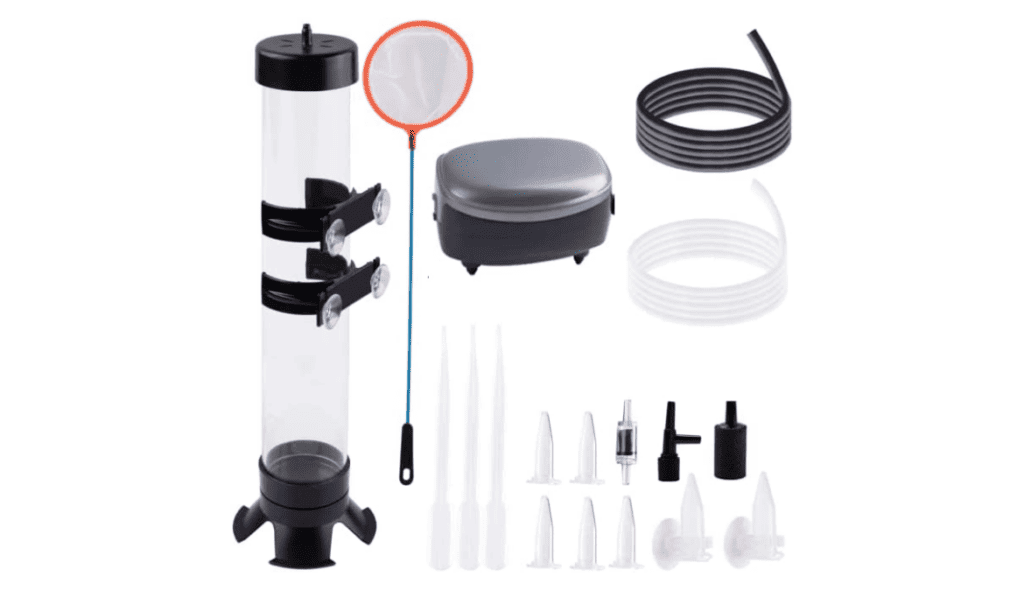
Once hatched, the brine shrimp can be separated from the unhatched eggs and shell debris and fed directly to your fish. With a little practice, hatching brine shrimp can provide a steady supply of high-quality live food.


